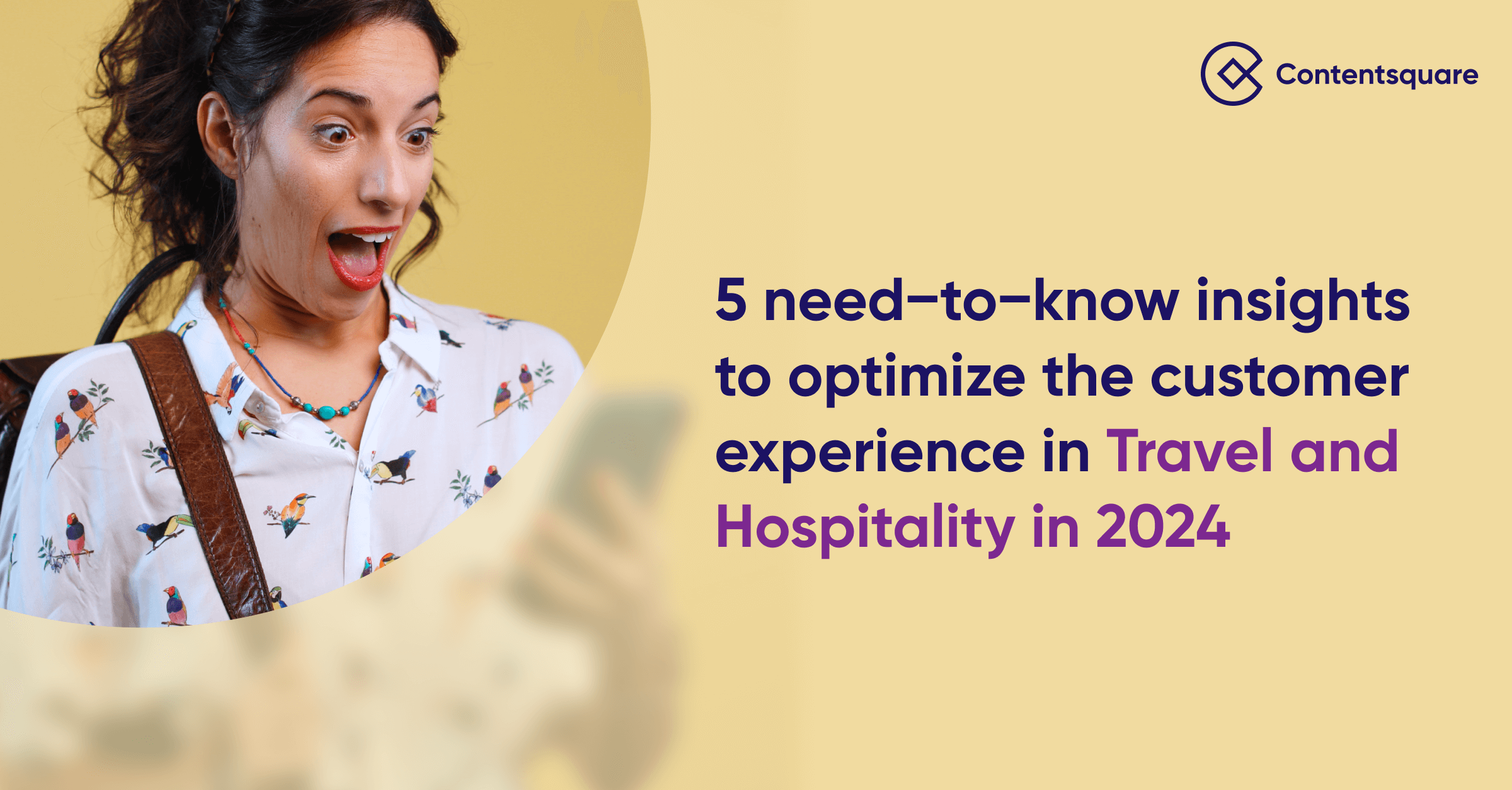Data: The Secret Weapon for Customer Satisfaction

- How does data contribute to creating better customer experiences in the cosmetics industry?
- What is your approach to privacy and security?
- I think that leaves us three more cornerstones to discuss?
- Data's growing role within businesses inevitably leads to organizational changes. How's that going at Sephora?
- What is the greatest benefit a data-driven policy can offer?
- How can we measure the impact of data?
- How do you measure customer satisfaction?
- What advice would you give to brands who want to become more data-driven?
- What do you think of digitally native brands taking more ownership of their first-party data?
- What will the demise of cookies change for eCommerce companies?
How are today’s brands becoming more data-driven? They’re adopting new tools and incrementally making changes based on their data and analysis.
As the eCommerce landscape continues to get more and more competitive, now is a great time for brands to start building a data-centric culture and implement the tools they need to succeed in a crowded marketplace. This can help them make data-driven decisions about the customer journey analytics and, ultimately, improve customer satisfaction.
We talked to data guru Mathieu Staat, who is a Digital & Customer Marketing Director EME at Sephora, a leading beauty brand that has been becoming more and more data-driven over the last few years and depended heavily on data to roll out its beloved Beauty Insider customer loyalty program.
First-party data, privacy, the customer experience, and more – we asked Staat to share his views on how data can impact companies and their customers, as well as how Sephora is using data to engage its fans:
How does data contribute to creating better customer experiences in the cosmetics industry?
Yes, quite clearly. Data supports six different cornerstones at Sephora. First of all, there is its contribution to advertising. We can now optimize everything by using data: targeting specific audience segments, excluding certain users, finding new customer segments, implementing the right incentives, and identifying the right triggers at the right time to retain customers.
Then, there’s also online and offline touchpoint optimization. Data acts as an icebreaker in the customer journey and allows us to personalize the relationship regardless of whatever channel the customer uses to come in contact with the brand. Data means we can be much more relevant with our content and the things we offer to our customers in-store, just like online.
As for customer service, data has helped us make a huge amount of progress and become much more efficient. Our tools mean we can respond immediately through automatic interactions, cutting out the need to contact customer service with dynamic FAQs and chatbots, for example. There are limits, of course, and some requests still go to customer service if necessary.
What is your approach to privacy and security?
Of course, everything has to comply with GDPR. Data is secure and our stance is obviously “privacy first”. Access to data is controlled and secure; for example, a customer’s bank details are inaccessible and highly protected. As we look to innovate further, particularly with biometric payment, this means thinking hard about the security aspects of this type of payment and conforming to PSD2.
I think that leaves us three more cornerstones to discuss?
Exactly! And they aren’t insignificant. Data also helps with pricing, supply, and logistics – particularly in terms of forecasts. Our algorithm can predict order quantities on the basis of data related to current and future campaigns, seasonality, and new products, for example. There is obviously a limit. We can’t predict everything, including external factors. We’ve especially seen this with the health crisis this year. It is, and will always be, necessary to make human adjustments.
Lastly, our sixth cornerstone is benchmarking analysis reports. Is my strategy working? How is conversion changing?
Data’s growing role within businesses inevitably leads to organizational changes. How’s that going at Sephora?
Quite honestly, very well. As soon as you can offer accuracy and precision, everyone is happy. That said, you have to bear in mind that data can’t do everything on its own. You have to find a balance somewhere between manual and automatic. You always need the human touch!
What is the greatest benefit a data-driven policy can offer?
I may be stating the obvious, but data is a huge gold mine! It helps us understand our customers, adapt, anticipate, and stand out from the crowd. It’s thanks to this 360° data that our loyalty programs perform so well.
How can we measure the impact of data?
Aggregating information is useless if you don’t learn lessons from it or if your approach isn’t easy to put into action. Data not only means we can identify pain points, but also points of delight. From there, we can prioritize optimizations and analyze the impact of the investments we’ve made, both for the company (conversion) and for the customers (satisfaction).
This can come across on marketing budgets too. By optimizing actions, we can reduce some of their costs. But above all else, we measure data’s impact by measuring its impact on customer satisfaction. We’ve seen a huge uptick in customer satisfaction thanks to improved journeys both online and in-store.
How do you measure customer satisfaction?
We use journey analysis tools such as Contentsquare and we do a lot of A/B testing. We have carried out plenty of qualitative and quantitative studies. It is important to monitor NPS and to maintain a customer satisfaction panel. Panels are particularly vital for quickly understanding obstacles or how to accelerate omnichannel conversions. Monitoring customer satisfaction is crucial, especially for cracking the code to increasing customer conversion.
What advice would you give to brands who want to become more data-driven?
You have to be careful not to collect data just for data’s sake. You can easily get lost in investigating your numbers and leave without any interesting insights to show for it. It’s important to set targets and act on the data you have. You should aim to use data to improve your business KPIs and customer satisfaction while quantifying your efforts along the way.
What do you think of digitally native brands taking more ownership of their first-party data?
First-party data is certainly being discussed more and more by brands. We’re coming at it from a different angle. At Sephora, we’re trying to reduce our dependence on third parties. With our ad server, for example, we have this data directly in-hand. But, this raises the question of data storage and how to deal with a multitude of storage locations.
In the past, this data could be atomized, but getting it back together and accessing it could be complex. We now host a very large proportion of our data in Europe on the Google Cloud Platform. Our customer data is not shared with third parties for commercial purposes. Like many brands, we want to be in charge of our data within an evolving, centralized ecosystem that can be used effectively, according to our needs.
What will the demise of cookies change for eCommerce companies?
At the end of the day, I’m not sure it will change very much. Human creativity is limitless. There will be other solutions!
We’re going to move from precision marketing to prediction marketing, with first-party data becoming increasingly important. We will adapt. There will be new models that put more meaning into data collection for consumers. For example, in Germany, Sephora has launched a new loyalty program, “Sephora Unlimited,” in which data sharing is rewarded by points. Data collection is evolving towards a win-win situation. We are rewarding data-sharing by offering customers something in return for engaging with our brand.



